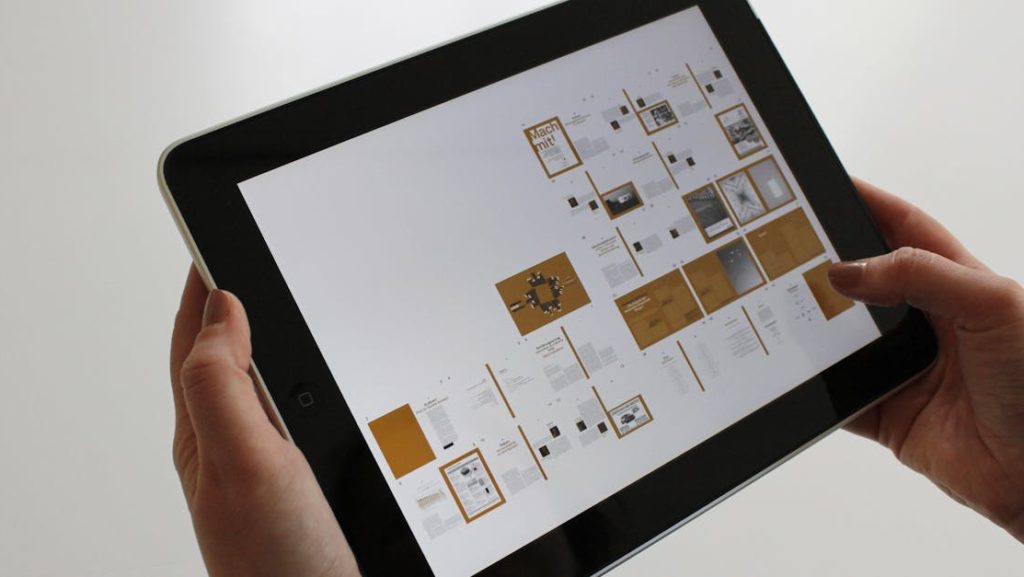
For anyone working in SaaS—be it in product management, marketing, or customer success—the gap between an active free user and a committed paid customer is the ultimate battleground. Free plans and trials pack an audience with potential, but turning signups into true believers demands more than hope and waiting. It’s about designing product experiences that captivate, educate, and instill confidence. Over the past few years, we’ve witnessed that interactive SaaS demos are a game-changer, fundamentally improving how free users engage and fueling more consistent upgrades.
How Interactivity Elevates the Free User Experience
Traditionally, onboarding free users has meant static documentation, unengaging videos, or clunky PDF guides. These have diminishing returns. People skim, click away, or simply don’t absorb the value of your app. With interactive demos, the script is flipped: the user isn’t just passively receiving information, they’re immersed—exploring, clicking, and learning by doing.
- Hands-on Exploration: Interactive demos move users from simple observation to real engagement. Users feel the product working for them, dramatically improving retention of key workflows and feature sets.
- Immediate Value Discovery: Instead of hoping users stumble upon their ‘a-ha’ moment, you can guide them straight to it—whether it’s a dashboard insight, an automation trigger, or that one killer feature only your SaaS provides.
- Guided Personalization: Tailored tours for different roles, industries, or use-cases (like sales, marketing, or support) mean each visitor sees how your SaaS solves their specific problems, not just a generic walkthrough.
- Less Friction, More Action: When demos are frictionless—no browser plugins, no security hoops, and self-hosted for direct control—free users stick around longer and actively experiment.

Why Passive Onboarding Falls Short
Free users are notoriously fickle. Their attention spans are short, and the initial impression counts more than many realize. Static videos rarely adapt to the evolving needs of different segments. Documentation alone can be overwhelming, especially for new users who aren’t ready to dig deep. These methods leave hidden value untapped, resulting in low feature discovery and abandonment before users ever appreciate why your software is worth paying for.
If you’re curious about modern onboarding methods, we discussed how interactive SaaS walkthroughs outperform traditional video tutorials in detail in our recent blog: Why Interactive SaaS Walkthroughs Are Outperforming Traditional Video Tutorials in User Onboarding.
Interactive Demos: A User-First Approach
In our experience, an interactive SaaS demo lets product value shine immediately. Let’s break down the elements that make an interactive demo such a high-leverage asset in the free-to-paid journey.
- Self-Paced Exploration: Users can go at their own speed—backtrack, skip ahead, or pause—leading to higher comfort and confidence.
- Scenario-Based Learning: Tours can pivot based on industry, job role, or specific goals, making the learning experience deeply relevant and increasing emotional buy-in. For instance, onboarding flows for marketers can focus on analytics, while support agents see ticketing features first.
- Real-Time Guidance & Feedback: Live query resolution or interactive tooltips mean a query never turns into frustration. When users get stuck, they’re nudged in the right direction.
- No Technical Barriers: At DemoGo, we recognized that every unnecessary step (like installing a plugin) costs precious users. Our codeless, plugin-free approach means no one drops off for technical reasons.
Unlocking Upgrade Triggers with Interactive Demos
What truly separates paying customers from free users is their belief in your software’s value. Interactive demos give you control over exposing ‘premium’ upgrade triggers at just the right moment:
- Showcase Paid Features: During the demo, clearly, but organically, highlight functionality that’s available in higher tiers. Instead of blocking, offer a taste with suggestive upgrade prompts.
- Personalized CTAs: Because users’ interactions are tracked, calls-to-action can be tailored to their actions. For example: “You’ve completed dashboard setup. Unlock advanced analytics now with Pro!”
- In-Demo Lead Capture: Embedding registration or request forms inside the demo makes it easy to gather intent signals and route promising users toward upgrade conversations.
- Behavioral Analytics: See which steps users complete, where they drop off, and what actions signal readiness for conversion. Then, refine your tour to accelerate upgrade journeys.

Building Your First Interactive Demo: Strategies for Success
Getting started with interactive walkthroughs doesn’t require a technical overhaul. Here’s how we recommend creating high-impact demos leveraging DemoGo’s unique strengths:
- Map Out High-Impact Flows: Select a handful of “hero” journeys—like onboarding, setting up integrations, or inviting team members—that lead to product adoption.
- Capture Effortlessly: Record workflows using DemoGo’s desktop app (no plugin hassles, no browser compatibility worries), focusing on clean and uncluttered screens.
- Add Guided Steps: Use codeless tools to overlay pop-ups, callouts, and tooltips that intuitively move the user from step to step. Assign labels to each action so users know exactly why every click matters.
- Segment & Personalize: Create demo branches for different user personas—admin, marketer, developer, etc.—so each visitor’s first impression feels tailor-made.
- Embed Lead Capture: Add frictionless forms so interested users can signal upgrade interest, request a callback, or simply subscribe for tips without leaving the demo.
- Track and Optimize: Dive into analytics to see completion rates, drop-off points, feature engagement, and use this data to continuously refine walkthroughs and CTAs.
Best Practices for Engaging Free Users and Inspiring Upgrades
- Clarity First: Keep instructions short, benefit-oriented, and visually distinct. Don’t overload users with too many paths—focus on flows proven to lead to upgrades.
- Highlight What’s Possible: Use gentle overlays or pop-ups to draw attention to upgrade-only features. Allow users to try them partially or preview their impact to drive curiosity.
- Minimize Steps: Long, winding demos hurt engagement. Instead, design tours with 2-4 crucial ‘a-ha’ moments, then let users explore deeper as curiosity builds.
- Universal Access: No plugins, no external hosting dependencies, no wasted seconds. Users should launch your demo instantly—something that is core to DemoGo’s philosophy.
- Direct User Input: Let users leave quick feedback during demos. Even a simple thumbs-up/down or a one-click survey tells you what’s resonating and what needs tweaking.
- Freemium Foundation: Allow users to experience demos for free, lowering the risk and making experimentation a breeze. Only introduce advanced analytics or additional demos as part of the upgrade path.
Seeing the Results: What We’ve Observed
The impact of well-crafted interactive demos isn’t speculative—it’s measurable. In our work with SaaS teams, we’ve seen:
- Onboarding Completion Rates Skyrocket: Users who experience interactive demos finish onboarding much more often than those left with self-serve docs.
- Faster Conversion: Users reach their aha-moment sooner, reducing the time it takes for a free user to consider an upgrade.
- Support Tickets Drop: Step-by-step walkthroughs reduce confusion, which in turn means support teams spend less time on basic queries and more on value-adding conversations.
- Consistent Brand Story: Interactive demos ensure every user, regardless of how they enter your product, gets a coherent story and clear product narrative.
If you’re serious about modern SaaS demos, we dug deeper into keeping demos current in this piece: Top Strategies for Keeping SaaS Product Demos Up-to-Date with Rapid Feature Releases.

Bonus: Making Interactive Demos Work for the Whole Team
One of the overlooked values of codeless interactive demo tools like DemoGo is the ability to distribute demo creation across functions. Sales can design custom walkthroughs for prospects, customer success can update onboarding guides instantly, and marketing can launch new product tours with zero developer bottlenecks. This shared ownership boosts demo quality and relevance for every stage of the customer journey.
Start Strong: Tips for Your First Interactive Demo
- Pick Your “Hero” Task: What’s the first feature free users need to succeed? Start there.
- Chunk the Journey: Break demos into digestible steps with clear, action-oriented guidance.
- Add Feedback Loops: Allow users to submit feedback or questions at every stage, closing the loop between product and user immediately.
- Iterate Quickly: Use analytics—demo drop-off rates, feature engagement, time on task—to continuously refine content.
If you’re looking for broader onboarding inspiration, our post on How Hyper-Personalized Onboarding Drives Higher SaaS User Activation offers actionable frameworks relevant here.
Conclusion: Interactive Demos Are the New Normal for SaaS Growth
Interactive SaaS demos meet users exactly where they are—curious, busy, and craving value now. When you offer free users a guided, no-barriers way to achieve genuine product success, engagement rises naturally, and upgrades follow. As a team rooted in the freemium mindset, we believe every SaaS deserves to showcase its strengths from the very first click.
Ready to see this shift firsthand? Try DemoGo for free and start building interactive demos that convert curiosity into commitment.
